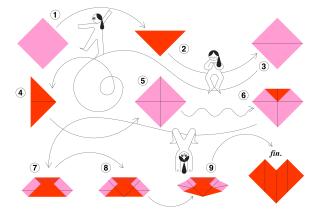Parenting : Room Art for Kids : Encouraging early decorating impulses provides a healthy outlet for self-expression.
- Share via
One measure of how fast children grow up is the speed with which they conclude that the clowns and dancing elephants on their walls are too babyish.
In fact, according to Stuart Cutler, a Westlake Village social worker in private practice with children, even at age 4 or 5, youngsters usually develop strong likes and dislikes that are separate from those of their parents. Soon after, they start wanting their rooms to reflect their own interests and tastes.
Encouraging early decorating impulses provides a healthy outlet for self-expression. It also gives children feelings of accomplishment that they can live with every day.
Also, says Marsha Broderick, a Calabasas-based interior designer, setting up a child’s bedroom according to the child’s taste can be an enjoyable activity for parents and children to share. But the project needs to be tackled systematically, she says, taking into account not just the child’s wishes and the limits of the family budget but also such decorating basics as lighting and color.
“You have to start out asking, ‘What are the needs for the room?’ ” Broderick says. She suggests that parents and children evaluate what accommodations, if any, they want to make for sleep-over guests, storage and desk needs and what lighting is required for work and play. Then, she says, they should discuss their fantasies for the room, the colors they like and the intriguing things they’ve seen in stores or publications on decorating for children.
This is the step most likely to stimulate differences of opinion.
Sometimes, Broderick says, something as simple as color gets parents and children into design arguments. She describes one client’s 9-year-old daughter who loves red and black--in part because she likes cartoon art, which typically pairs black with bold colors.
When the mother refused initially to allow those colors in the girl’s room, Broderick suggested a compromise. She found a fabric that subtly incorporated red and black, and she will be painting a wall mural of a cartoon-like, red-flowered plant and a whimsical black grandfather clock with red hands. “They will both love it when I’m done,” Broderick predicts.
Sometimes children like the results of a good design but balk at all the preliminary scouting time it takes to put a look together. Broderick suggests that parents do some pre-shopping, either on their own or with a by-the-hour interior designer. They can bring back photographs of key discoveries and swatches of fabrics and colors they think might look good. She says children might have trouble picturing what parents or decorators describe, and they do better with actual examples.
She advises parents to use a plan-a-room graphics kit, available in most bookstores. Not only will this reduce grown-ups’ errors in room planning, but it will also give children a better feel for their options and space restrictions. Also, the graphed-out space might settle an argument more effectively than a parent could, especially if the object of the disagreement is clearly going to be too big or too cumbersome for the space. Miscalculations of size and scale lead the list of mistakes people make when designing rooms, Broderick says.
In planning, Broderick encourages parents to incorporate organizational accessories that help manage the seemingly infinite number of prized possessions children collect--from priceless plastic party favors to swimming trophies and hair ribbons. She says stores specializing in space management offer wall units and closet accessories that tend to be adaptable over time to a child’s growing and changing storage needs.
Even when mapping a room for a younger child, Broderick says, parents can build in adaptability for the more mature design preferences of pre-adolescents.
The question of good taste can come to haunt parents as children grow up and fall in love with raunchy rock musicians and other questionable cultural icons. Perhaps then the issue becomes knowing which battles to fight and which to ignore, recognizing, of course, that eventually aesthetic trends are doomed to fall from grace, along with those old elephants and clowns.






